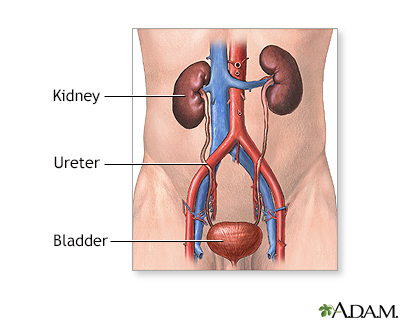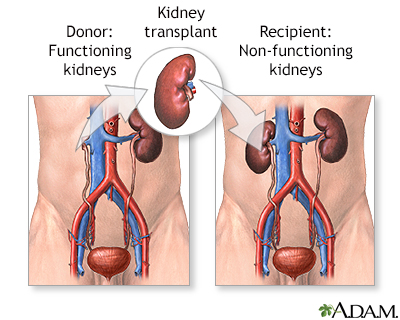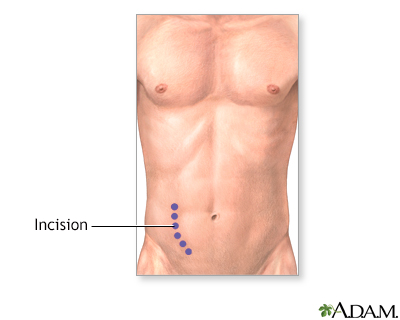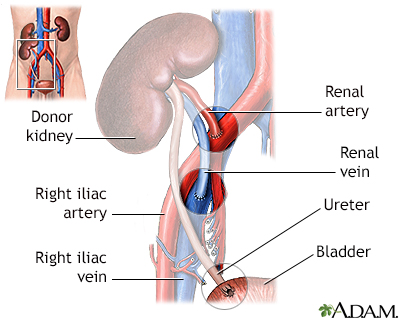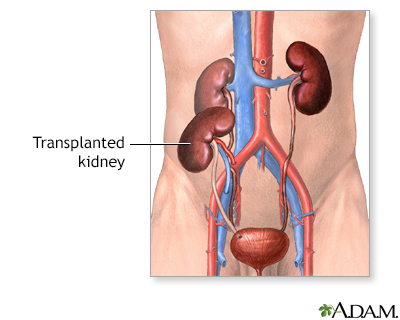Kidney transplant
| Normal anatomy |
|
The kidneys are paired organs that lie posterior to the abdomen, in the area of the lower back. The kidneys make urine, which is transported from the kidneys to the bladder by the ureters, long muscular tubes which connect the kidneys with the bladder.
|
|
| Indications |
|
Kidney transplant may be recommended for patients with kidney failure caused by:
- Severe, uncontrollable high blood pressure (hypertension)
- Infections
- Diabetes mellitus
- Congenital abnormalities of the kidneys
- Other diseases which cause renal failure, such as autoimmune disease
Donor kidneys are obtained from either brain-dead organ donors, or from living relatives or friends of the recipient.
|
|
| Incision |
|
While the patient is deep asleep and pain-free (general anesthesia), an incision is made in the lower right quadrant of the abdomen. The donor kidney is transplanted into the right lower pelvis of the recipient.
|
|
| Procedure |
|
The new kidney is sutured into place. The vessels of the new kidney are connected to the vessels leading to the right leg (the iliac vessels), and the ureter is sutured to the bladder.
|
|
| Aftercare |
|
In most cases, the recipient's native kidneys are left in place, and the transplanted kidney performs all the functions that both kidneys perform in healthy people. Kidney transplant recipients are required to take immunosuppressive medications for the rest of the lives, to prevent immune rejection of the transplanted organ.
|
|

|
Review Date:
4/1/2025
Reviewed By:
Kelly L. Stratton, MD, FACS, Associate Professor, Department of Urology, University of Oklahoma Health Sciences Center, Oklahoma City, OK. Also reviewed by David C. Dugdale, MD, Medical Director, Brenda Conaway, Editorial Director, and the A.D.A.M. Editorial team. |
The information provided herein should not be used during any medical emergency or for the diagnosis or treatment of any medical condition. A licensed medical professional should be consulted for diagnosis and treatment of any and all medical conditions. Links to other sites are provided for information only -- they do not constitute endorsements of those other sites. No warranty of any kind, either expressed or implied, is made as to the accuracy, reliability, timeliness, or correctness of any translations made by a third-party service of the information provided herein into any other language. � 1997-
A.D.A.M., a business unit of Ebix, Inc. Any duplication or distribution of the information contained herein is strictly prohibited.
� 1997-

All rights reserved.

